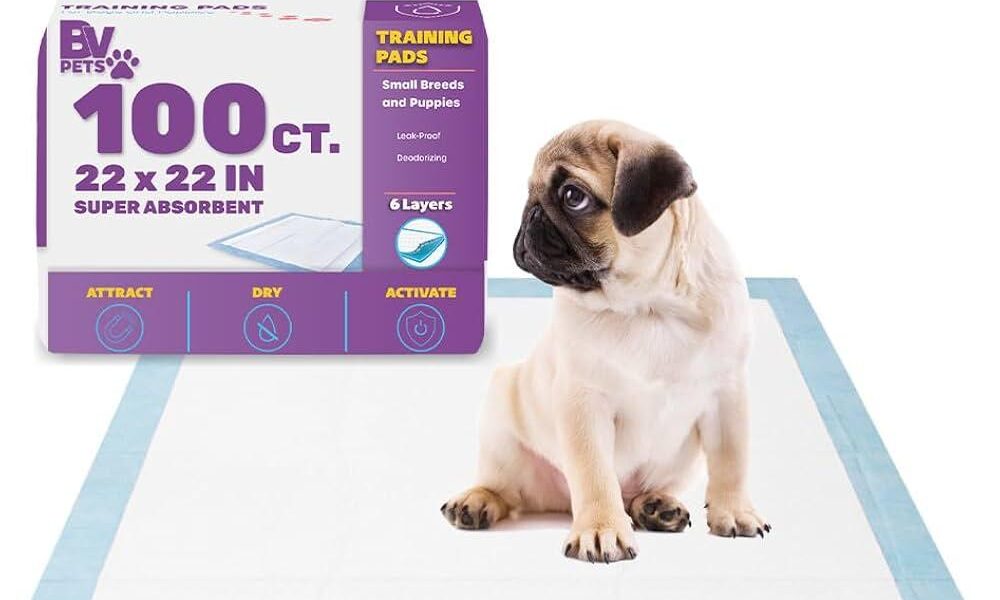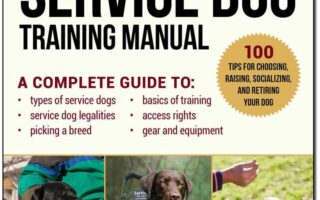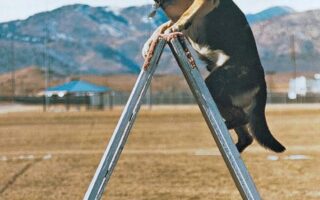Unlocking the Secrets of Puppy Pad Training: A New Era in Pet Care
Bringing a puppy into your home is a joyous occasion, filled with moments of play and affection, but it also comes with its own set of challenges. One significant hurdle that many pet owners face is navigating the intricate world of house training. Enter puppy pad training—a practical solution that has gained popularity among dog lovers for its convenience and effectiveness. As you juggle the joys of puppyhood with the demands of daily life, understanding this training method can help create a harmonious environment for both you and your furry friend. In this article, we will explore the fundamentals of puppy pad training, its benefits, and effective strategies to ensure a seamless transition from playful pup to a well-mannered companion. Whether you’re a seasoned pet owner or a first-time puppy parent, our guide will shed light on this approach and help you embark on a rewarding journey together.
Table of Contents
- Understanding the Basics of Puppy Pad Training
- Creating the Ideal Environment for Success
- Establishing a Consistent Routine for Your Puppy
- Common Challenges and Effective Solutions
- Q&A
- The Way Forward
Understanding the Basics of Puppy Pad Training
Puppy pad training is an effective approach that helps new pet owners manage their furry friends’ bathroom habits. This method utilizes specially designed pads that absorb moisture and odors, providing a designated area for your puppy to relieve itself. Initially, it’s essential to choose a quiet, easily accessible location for the pads, ensuring your puppy feels comfortable. Over time, as they become familiar with the concept, consistency and positive reinforcement are crucial. Observing your puppy’s behavior can help identify signs that they need to go, allowing you to guide them to the pad promptly.
To make the training process smoother, consider these basic tips:
- Positive Reinforcement: Always reward your puppy with treats and praise when they use the pad correctly.
- Regular Schedule: Take your puppy to the pad at regular intervals, especially after meals, naps, or playtime.
- Gradual Transition: Once they have mastered pad training, slowly introduce outdoor bathroom breaks.
- Observe for Patterns: Keep track of when and how often your puppy uses the pad to establish a routine.
| Training Tip | Description |
|---|---|
| Consistency | Ensure the pad is always in the same spot to avoid confusion. |
| Cleanliness | Keep the pad clean to encourage your puppy to use it. |
Creating the Ideal Environment for Success
Establishing a conducive atmosphere for puppy pad training requires careful attention to detail and a well-thought-out approach. Begin by selecting a designated area in your home that is easily accessible for your puppy yet somewhat removed from their sleeping and playing zones. This will help create a clear connection in their mind that this space is specifically for bathroom needs. Consistency is key; be sure to lay down the puppy pads in the same spot each time to reinforce this behavior. Consider adding a safe and comfortable mat around the pads, providing a sense of security for your pup and encouraging them to use the pads more readily.
Next, incorporate positive reinforcement techniques to enhance their training experience. Create a reward system that is enticing—such as small treats or verbal praise—any time your puppy successfully uses the pad. This can motivate them to repeat the behavior. Here are some effective tips to ensure long-lasting success:
- Regularly scheduled potty breaks: Take your puppy to the pad at regular intervals, especially after eating or drinking.
- Minimize distractions: Keep the area calm and quiet to help your puppy focus on their training.
- Monitor progress: Keep track of their successes and setbacks to adjust your approach accordingly.
Establishing a Consistent Routine for Your Puppy
Creating a consistent routine for your puppy is vital for effective training, especially when it comes to mastering puppy pad training. By establishing a predictable schedule, you help your furry friend learn when and where to relieve themselves. Consider the following tips for developing a reliable routine:
- Regular Feeding Times: Feed your puppy at the same times every day to regulate their potty needs.
- Scheduled Trips to the Pad: Take your puppy to the pad after meals, playtime, and naps.
- Positive Reinforcement: Reward your puppy with treats and praise immediately after they use the pad correctly.
- Puppy’s Body Language: Pay attention to signs your puppy might need to go, such as sniffing or circling.
In addition to these practices, it’s helpful to create a visual schedule for you and your puppy. This can be a simple table that outlines daily activities, including playtime, feeding, and potty breaks:
| Time | Activity |
|---|---|
| 7:00 AM | Feeding |
| 7:15 AM | Potty Break |
| 8:00 AM | Playtime |
| 11:00 AM | Potty Break |
| 12:00 PM | Feeding |
| 12:15 PM | Potty Break |
This structured approach not only prepares your puppy for successful potty habits but also fosters a loving and secure environment, enhancing your bond as they learn to navigate their new world with confidence.
Common Challenges and Effective Solutions
Puppy pad training can come with its fair share of hurdles, especially when your furry friend is still learning the ropes. One common challenge is inconsistency in following the training schedule. Puppies thrive on routine, and unexpected deviations can confuse them, leading to accidents around the house. To combat this, owners should establish a strict potty schedule and use keywords like “go potty” to reinforce the desired behavior. In addition, puppy confusion can arise if they are allowed free roam of the house—this often leads to them seeing pads as optional rather than a necessity. It’s vital to keep them confined to areas with pads until they have grasped the habit firmly.
To tackle these issues effectively, consider implementing a system of positive reinforcement. Rewarding your pup with treats or praise immediately after they use the pad can encourage them to associate the behavior with positive outcomes. It also helps to maintain a clean environment by promptly disposing of used pads. Moreover, patience and consistency are crucial; setting aside dedicated time each day for training sessions can significantly expedite the learning process. Here’s a simple table with key strategies for overcoming common challenges:
| Challenge | Solution |
|---|---|
| Inconsistency | Establish a strict potty schedule |
| Puppy confusion | Limit roaming space until habits form |
| Lack of motivation | Use treats and praise as rewards |
| Unclean environment | Dispose of used pads promptly |
| Frustration | Practice patience and maintain consistency |
Q&A
Q&A: Navigating the World of Puppy Pad Training
Q: What exactly is puppy pad training?
A: Puppy pad training is a method used to teach dogs, especially young puppies, to relieve themselves on absorbent pads placed indoors. This technique is particularly useful for pet owners who live in apartments or have limited access to outdoor spaces. The pads serve as a designated spot for potty needs, helping ease the transition from indoor training to outdoor bathroom habits.
Q: Why should I consider puppy pad training for my pet?
A: There are several reasons to consider puppy pad training. Firstly, it accommodates busy lifestyles, ensuring your puppy has a reliable spot when you can’t step outside. It can also be beneficial for training during inclement weather or for older dogs who may struggle with mobility. Furthermore, it helps establish good hygiene habits in a controlled area, making cleanup easier.
Q: At what age should I start puppy pad training?
A: You can begin puppy pad training as soon as you bring your puppy home, typically around 8 weeks old. Puppies have a natural instinct to seek out a spot to relieve themselves, so starting training early can help them adapt quickly. Just remember to be patient and consistent, as young puppies may not have full control over their bladders yet.
Q: How do I effectively train my puppy to use the pads?
A: To train your puppy, start by placing the pads in a quiet, easily accessible area. Whenever you observe signs that your puppy needs to go—like sniffing or circling—gently guide them to the pad. Use positive reinforcement, such as praise or treats, when they use the pad correctly. Consistency is key; regularly take them to the pad after meals, naps, or playtime to reinforce the behavior.
Q: What challenges might I face during puppy pad training?
A: Challenges can include accidents outside the pad, confusion about where to go, or reluctance to use the pads. It’s essential to remain patient and avoid punishment, as this can instill fear or anxiety. Instead, focus on reinforcing positive behaviors and maintaining a calm demeanor. If your puppy consistently avoids the pad, consider adjusting its location, size, or ensuring it’s clean and dry.
Q: How can I transition my puppy from pads to outdoor potty habits?
A: Transitioning from puppy pads to outdoor potty habits involves gradually moving the pad closer to an exit door. Once your puppy is comfortable using the pad, you can start placing it outside. Praise your puppy for using the pad outdoors, and slowly phase out the indoor pads. Gradually, encourage them to relieve themselves directly on the grass, rewarding them for their progress.
Q: Are there any alternatives to puppy pad training?
A: Yes, there are alternatives like outdoor training or using litter boxes designed for dogs. Outdoor training involves taking your puppy outside frequently, reinforcing the idea of utilizing nature rather than indoor pads. Litter boxes can be a suitable alternative for small breeds or when outdoor access is limited. The best choice depends on your lifestyle, space, and your puppy’s needs.
Q: Is puppy pad training suitable for all dog breeds?
A: Puppy pad training can be beneficial for dogs of all breeds, but some may adapt more readily than others. Small breeds or those that may have difficulty holding their bladder often benefit the most. Regardless of breed, the key lies in understanding your pet’s habits and responding with appropriate training strategies tailored to their specific needs.
Q: Any final tips for successful puppy pad training?
A: Consistency, patience, and positive reinforcement are the cornerstones of successful puppy pad training. Remember to set realistic expectations—every puppy learns at their own pace. Keep the training environment stress-free and focus on making the experience positive. And most importantly, enjoy the bonding time with your puppy as you navigate the exciting journey of pet parenthood!
—
With these strategies in hand, you’re now equipped to tackle puppy pad training with confidence. Happy training!
The Way Forward
puppy pad training can be an effective and convenient method for housebreaking your furry friend, offering both you and your pup a sense of security and comfort during the learning process. By understanding your dog’s needs and establishing a consistent routine, you can help them grasp the concept of using their designated area with ease. Remember, patience and positive reinforcement are key components in this journey. As you watch your puppy flourish and adapt to their new environment, you’ll not only strengthen your bond but also lay the groundwork for a well-trained companion. With time, dedication, and love, your puppy will graduate from pads to the great outdoors, ready to explore the world alongside you. Happy training!



